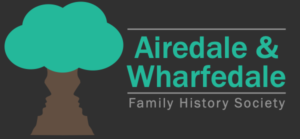By: Stanley Merridew
Arthington
This linear village was part of the parish of Adel until 1865 when the village church was opened. It is a good example of how the Church of England’s slow response to a rising population allowed nonconformists to thrive in communities remote from the parish church. Arthington is three to four miles from Adel church, uphill virtually all the way. Not an easy journey for a family with toddlers and elderly relatives in tow.
The earliest evidence I have found of a Methodist presence is in 1790 when it is named as part of the Otley Circuit. By 1798 a property belonging to the Waterhouse family was licensed as a preaching place. Those signing the license were Joseph, Moses & John Hainsworth, Joseph Todd, William Nicholson, Matthias Cooke, James Waterhouse & William Cockitt.
Several
generations of the Myers family from
Creskeld Grange were involved with the movement along with the Ingham family who were related by
marriage. At one time Arthington Hall
was the home of Thomas Farrer,
treasurer of the Methodist Missionary Society.
His successor at the Hall was Reverend Wm Sheepshanks, who it appears took a relaxed view of the Methodists
and shared the Sunday School with them.
Finally in 1894 a Methodist chapel was opened. Unfortunately the only records that have been deposited are the marriages for 1901-1974. These are held at Wakefield Record Office.
Arthington chapel

Eccup
Eccup is mentioned on a preaching plan of Leeds as early as 1777, at this date meetings would have been held in a barn or private house. The chapel, built in the nineteenth century, stood on Eccup lane, close to the New Inn. It was demolished in the 1950s. No records appear to have survived.
Weardley
Part of the Harewood Estate, so presumably the Lascelles family were sympathetic to the Methodist cause. The chapel, which still survives, although now used as Weardley Cattery was built in ===. Records of
Baptisms 1943-1963 are held at Leeds Archives.
Weardley Chapel

Harewood
John Pawson, originally of Thorner, is credited as the prime mover of the Methodist movement at Harewood. He was employed at Harewood House from 1856, aged 20, and from 1762 is shown as a preacher in the Leeds Circuit. He became President of the Wesleyan Conference in 1793 and 1801.
From 1772 the house of John Pool was licensed for worship. The application was signed by Richard Hargreaves, Richard Wilkinson, Richard Snow, William Pool and George Hunter. In 1796 William Thompson’s house was licensed, the signatories being Richard Snow, Abraham Barrett, Wm Pool, Richard Snow jnr, James Horner & John Labron. At the same date Edmund Parker’s house was also licensed the signatories being some of those above plus John Ingham & Samuel Nicholson. By 1814 they were meeting in two cottages on Harewood Avenue.
Weeton
Again within the bounds of the Harewood Estate, the chapel here was one of the first in the area, being erected in 1796. The registration was in the names of: Charles Atkinson, John Pickard, William Taylor, John Abbott & Peter Hindle. At the time of the 1851 Religious Census the Chapel Steward was Robert Denison. The chapel closed in 1938 and sadly no records are traceable.
Huby
Along with its near neighbour, Weeton, Methodism in these villages was linked by the Atkinson family, who resided at Huby Farm, now the Old Post Cottage on Strait Lane. A cottage belonging to John Taylor was licensed in 1796. The application was put forward by John Jackson, Thomas Farmery, Ralph Snowden, Thomas owther, William Gatenby & Wiiliam Hill.

Huby, 1889/90, replacing 1840 chapel
North Rigton
Another village which was largely part of Harewood Estate. Its early involvement with Methodism is shown by being listed as part of the newly formed Otley Circuit in 1790. Once again 1796 is an important date, when the house of Robert Wade is licensed for worship, the applicants being: Henry Robinson, John Rhodes, Isaac Denison, Robert Whitaker and William Garth.

North Rigton Opened 1932. replacing earlier chapel
Dunkeswick
The Barrett family who lived in the hamlet were heavily involved in the chapels of Harewood, Huby, North Rigton and Weeton. However I can find no record of a chapel in Dunkeswick, perhaps meetings were held in a local house.
The places mentioned above are all well documented on the Wesleyan Roll taken between 1895 and 1905 to celebrate the centenary of the death of John Wesley. Due to space it is not practicable to include them in this article. However, if you would like me to consult those parts I have indexed, please contact me. (See inside front cover)
